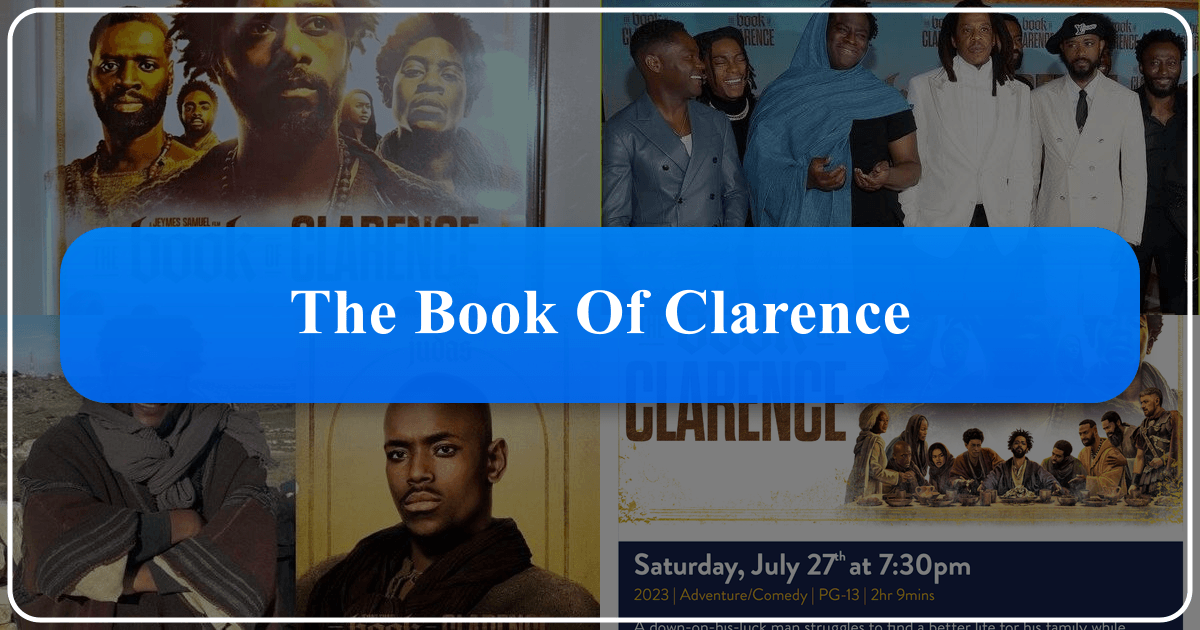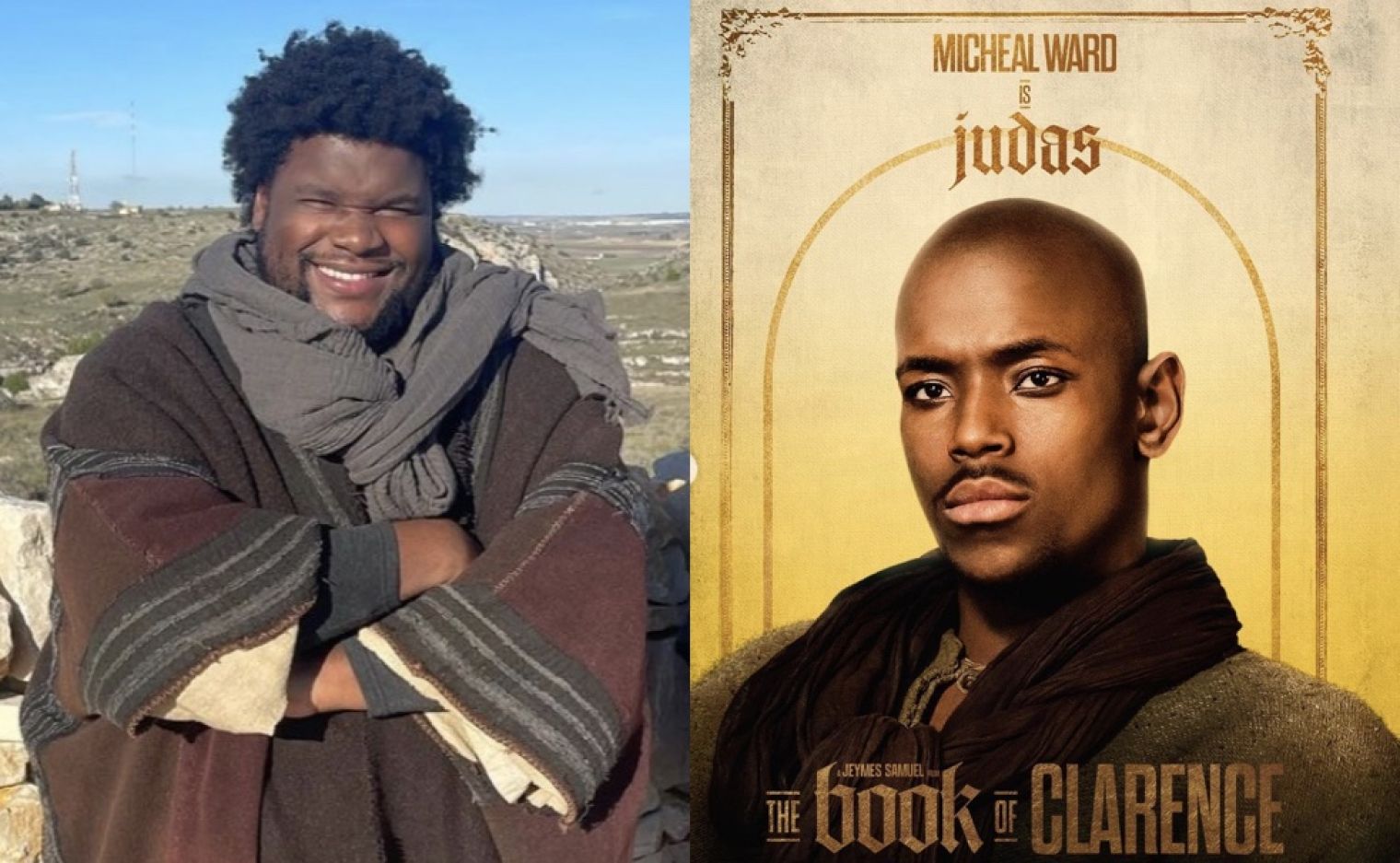The Book of Clarence: A Hilarious and Heartfelt Reimagining of Biblical Times

“The Book of Clarence,” a 2024 film directed by Jeymes Samuel, boldly reimagines the biblical era through a fresh, comedic lens. The film, starring LaKeith Stanfield as the titular character, has garnered significant attention for its unique approach to familiar religious narratives and its star-studded cast. This analysis will explore “The Book of Clarence” across several key areas, drawing on reviews, interviews, and the film’s overall themes.
The Narrative: A Hustler’s Journey of Faith

The story centers on Clarence, a street-smart hustler struggling to provide for his family while battling overwhelming debt. Instead of passively observing the rise of Jesus and his apostles, Clarence actively seeks to become one of them, viewing it as a path to wealth and power. However, his journey is far from straightforward; it’s a rollercoaster of comedic misadventures, unexpected revelations, and ultimately, a profound exploration of faith, not as a dogmatic belief system, but as a personal journey of self-discovery. Clarence’s initial skepticism and cynicism gradually give way to a newfound understanding and acceptance of Jesus as the Messiah, albeit through a circuitous and often humorous path. This arc, skillfully portrayed by Stanfield, allows the audience to connect with Clarence’s struggles and triumphs on a deeply human level. The film doesn’t mock religion but offers a unique, comedic interpretation of faith’s transformative power, specifically highlighting the internal conflict between outward skepticism and inner belief.

Genre and Style: A Unique Blend
“The Book of Clarence” defies easy categorization. While firmly rooted in the biblical era, it incorporates elements of comedy, action, and even a touch of fantasy, creating a surprisingly cohesive whole. The film’s anachronistic use of music and its fast-paced dialogue give it a distinct modern feel, a style that initially contrasts sharply with its historical setting, yet somehow enhances the overall narrative. This stylistic choice creates an engaging viewing experience, successfully bridging the gap between historical drama and modern sensibilities. The energetic and humorous approach allows for a reinterpretation of the biblical narrative that is both entertaining and thought-provoking. Furthermore, the film’s cinematography and visual style evoke classic biblical epics, while simultaneously introducing unique artistic choices that set it apart from traditional religious films.

The Characters: A Star-Studded Cast in Memorable Roles
The film boasts an impressive cast, led by LaKeith Stanfield’s nuanced performance as Clarence. He is ably supported by a stellar ensemble including Omar Sy, RJ Cyler, Anna Diop, David Oyelowo, Alfre Woodard, Benedict Cumberbatch, and James McAvoy, each bringing their own unique charisma and depth to their respective roles. This casting choice, along with the writer-director’s decision to place Black characters at the center of the narrative, offers a significant departure from traditional portrayals of the biblical era, and it expands the scope and diversity of biblical storytelling within the cinematic landscape. The inclusion of familiar biblical figures like Jesus, Mary Magdalene, and John the Baptist, all reimagined with a modern sensibility, further adds to the film’s unique charm.
Character Development and Relationships
Beyond the star power, the character development is a significant strength of the film. The relationships between Clarence and his brother Thomas, Clarence and Varinia, and even Clarence’s evolving relationship with Jesus himself are complex and engaging. These relationships add depth and emotional weight to the comedic elements, preventing the film from becoming solely a farce. The dynamic between Clarence and his best friend Elijah provides a constant source of humor and grounded perspective, grounding the protagonist’s fantastical journey. The film explores these relationships with sensitivity, allowing for emotional resonance that extends beyond the film’s comedic elements.
Cultural Impact and Reception: A Divisive Yet Engaging Film
The release of “The Book of Clarence” has sparked a range of reactions, from enthusiastic praise to critical condemnation. Some viewers have embraced the film’s irreverent humor and fresh perspective on biblical narratives, finding it both entertaining and thought-provoking. However, others have criticized its creative liberties and portrayal of religious figures, viewing it as potentially blasphemous or disrespectful. This diverse reception highlights the film’s audacity in challenging traditional interpretations of biblical stories and engaging with faith in a non-traditional way.
Critical Analysis and Audience Response
Review aggregators like Rotten Tomatoes showcase the polarized opinions of critics and audiences, with scores highlighting this division. While some lauded the film’s comedic timing, performances, and bold stylistic choices, others found the tone inconsistent and the narrative uneven. This demonstrates the film’s ambition in attempting to balance humor and genuine emotion within a context traditionally dominated by more serious treatments. The film’s reception highlights a broader discussion around how religious stories can be adapted for the modern screen and whether humor can coexist with the exploration of profound spiritual themes.
Themes and Symbolism: Beyond the Humor
Beyond the laughs and the star power, “The Book of Clarence” explores several significant themes, including faith, self-belief, societal expectations, and the pursuit of meaning in life. The film uses symbolism and allegory effectively to convey these deeper messages, adding layers of complexity that reward careful viewing. The central theme of the redemptive power of belief is not presented as a simple or easy answer but rather as a personal journey, filled with struggles, doubts, and eventual acceptance. The film questions traditional notions of faith and encourages viewers to examine their own beliefs, challenging viewers to contemplate their own concepts of spirituality and identity.
Exploring Faith and Belief
Clarence’s transformative journey from cynical hustler to a quasi-apostle serves as a powerful metaphor for the complexities of faith. The film doesn’t shy away from showing the messy and often contradictory nature of belief, demonstrating that the path to faith isn’t always straightforward or easily defined. The film’s exploration of faith isn’t confined to the religious aspect; it delves into the idea of having faith in oneself and one’s potential, a theme deeply embedded within the narrative of the film. The overall message highlights that the journey of self-discovery is just as important as the destination.
Conclusion: A Unique Cinematic Experience
“The Book of Clarence” is undeniably a unique cinematic experience. Its bold stylistic choices, star-studded cast, and thought-provoking exploration of faith make it a film that will spark conversation and inspire diverse interpretations. Though its reception may be divided, its ambition and originality cannot be denied. The film’s legacy may lie not in unanimous critical acclaim, but in its ability to challenge viewers to question their preconceptions about faith, storytelling, and the potential of cinema to explore complex themes in unexpected and entertaining ways. The film challenges traditional norms and offers a contemporary audience a chance to connect with a biblical narrative through a lens that is both amusing and emotionally resonant. While the film’s interpretation of the biblical narrative might be unorthodox for some, its unique approach and powerful performances ensure that “The Book of Clarence” will remain a topic of conversation for years to come.